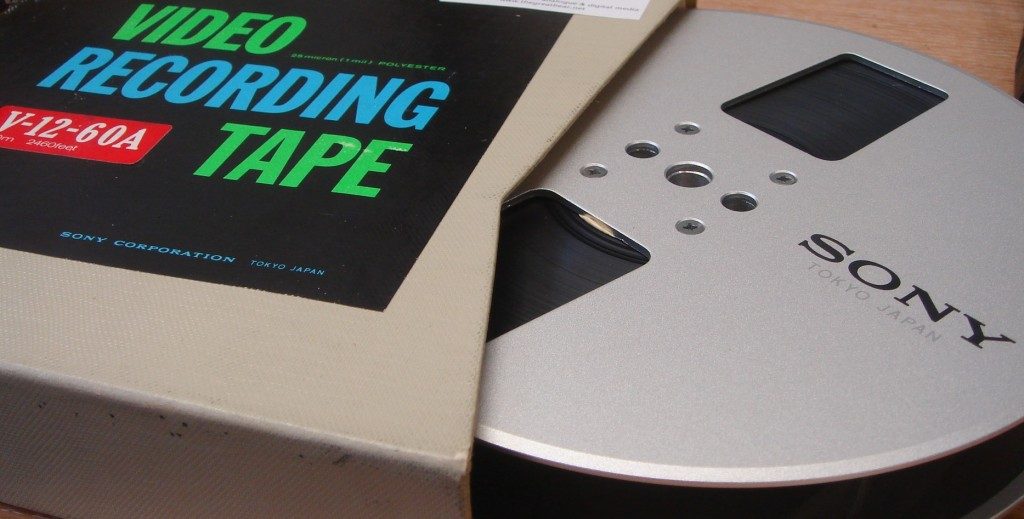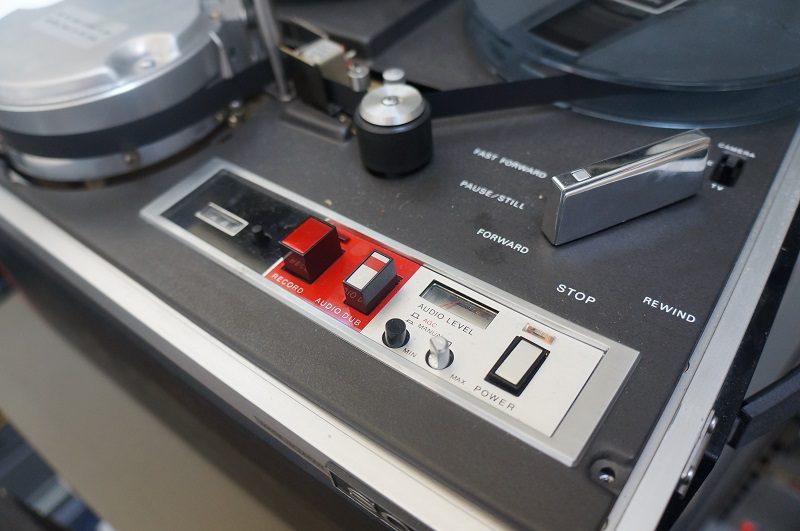Media scholars, tinkerers and ‘thinkerers’ gathered in London last week for ADAPT TV‘s Hands on History Conference.
ADAPT is a five-year research project based at Royal Holloway, University of London that aims to capture and analyse the complex histories of TV production from the 1950s to the present.
A core part of the project methodology is the creation of simulated media environments that re-unite TV production crews with the specific machines they used in order to trigger sensory, practical and emotional memories.
Such embodied insights are largely absent from traditional historical research which is invested in maintaining a conceptual distance from ‘the past’.
This ‘hands-on’ approach can bring alternative historical perspectives alive by activating old machinery and the cultural practices attached to their use.
Tinkering
Andreas Fickers described these methodologies in his keynote as ‘experimental media archaeology.’
Tinkering and ‘playing’ with media technologies were presented as alternative techniques that can ‘re-sensitise’ researchers to the lost dimensions of media experience.
Such knowledge, which may resound as feelings of shock, disorientation or novelty, quickly become lost when media are normalised through everyday use.
Playing with old media as if they were new may offer crucial insights into what technologies enable us to do or think. Such activities are even valuable when a media tool breaks down.
Practicing Engagement
Practicing engagement was very much the defining feature of the conference.
The Projection Project based at Warwick University for example, explores the social and technical histories of cinema projection in the transition from analogue to the digital.
Lori Emerson discussed her work at the Media Archaeology Lab and Jason Papadimas, Sebastian Doring, and Jose Munoz tinkered with children’s toys and circuit boards to explore how cultural logics are socialised through the use of tools.
Many presentations focused on archiving software, video games and computational culture. Laine Nooney and Kevin Driscoll‘s presented their work on Softalk, an Apple II enthusiast magazine that circulated 1980–84, and Christian Hviid Mortensen from the Danish Media Museum discussed the challenges of curating video game culture.
Tape splices
Of most interest to Greatbear, because of its focus on magnetic tape, was Jessica Borge’s presentation on ‘The Secret Psychosexual Counselling Tapes of Dr Joan Malleson.’
Jessica recounted her research on a collection of clandestine recordings made by Dr Joan Malleson shortly before her suicide in 1956. During the course of her research Jessica realised that recordings were made without patients’ consent. This meant she could not write about the recorded content due to data protection issues.
Her focus then turned to the materiality of the tapes which enabled a close reconstruction of the scenarios in which the recordings were made.
Jessica’s presentation clearly speaks to the question of whether tape stock should be kept or destroyed post-digitisation. As a historian it was vital for her to see the original materials. Viewing the reels them enabled her to draw nuanced conclusions that would not have been possible if she had consulted access copies alone.
Yet keeping such artefacts, particularly when they cannot be played back in 10-15 years from now, will seem counter-intuitive and impractical for many archives, who are often have limited storage space available.
One way to ensure that the materiality of historical artefacts is recorded will of course lie in detailed metadata description. Jessica’s experience makes it clear the extent to which descriptive practices must go if the materiality of artefact is to be sufficiently captured in digital form. It is common place for extraneous information, such as writing on the tape box to be recorded in metadata records. Arguably the condition of the tape must also be recorded, including details such as splice marks or evidence of deterioration. These marks tell us crucial things about the environmental life of the tape and helps to place the object in its historical context, animating how it was used.
The Hands On History conference was a valuable opportunity for scholars and practitioners to meet and learn about these emerging historical methodologies.
The Network for Experimental Media Archaeology will continue to build on the connections made at the conference, and will act as a support hub for research, teaching and curatorial activities in this area. This is something Greatbear look forward to participating in, as preserving magnetic tape involves a lot of tinkering and a lot of learning.



